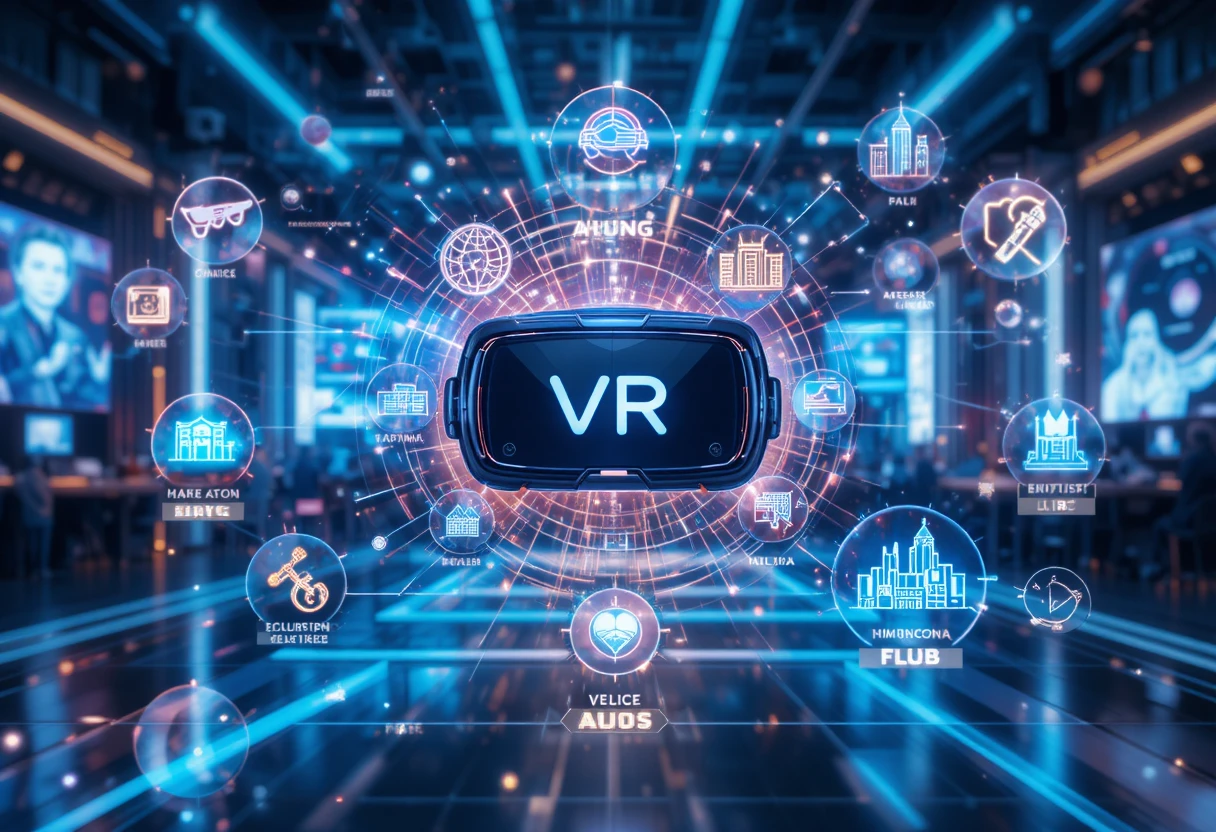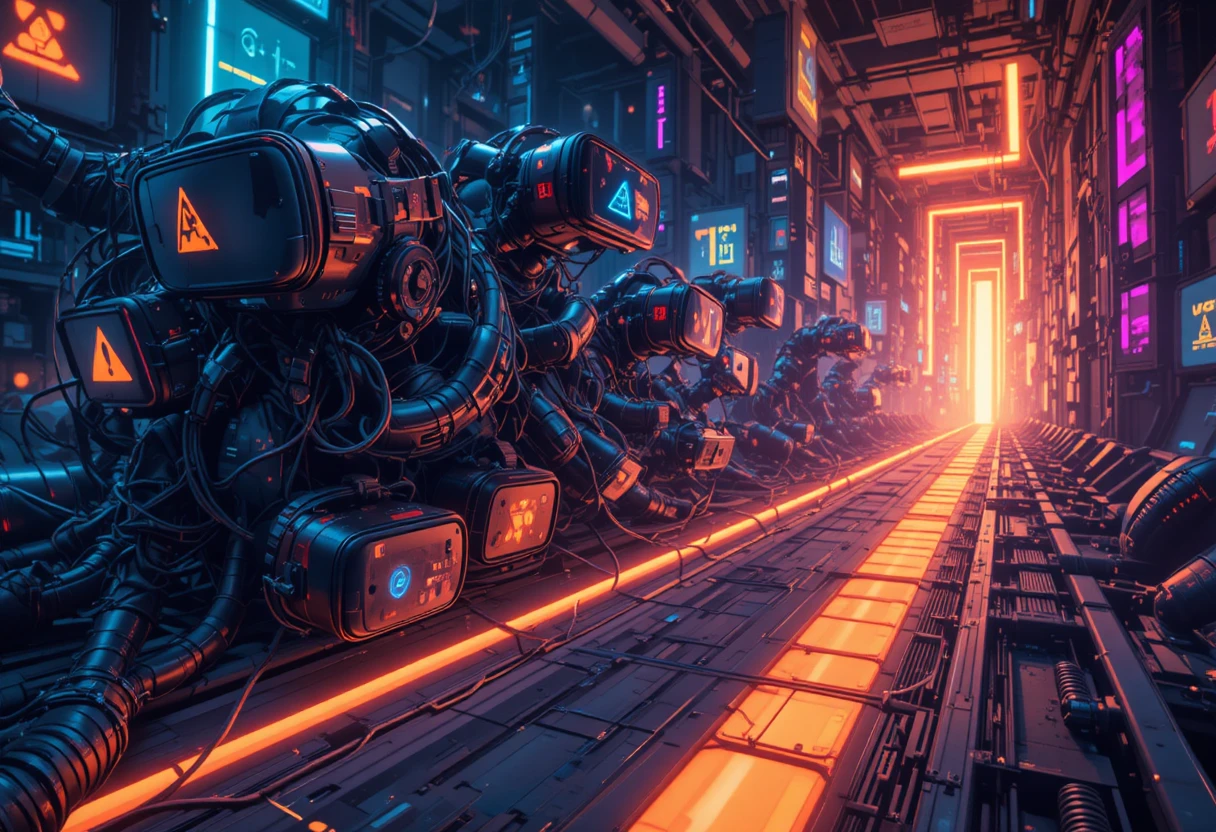Virtual Reality (VR) is revolutionizing how we experience the world by creating fully immersive digital environments that engage our senses and redefine entertainment, education, healthcare, and more. Unlike augmented reality, which overlays digital content onto the real world, VR transports users into entirely virtual spaces, offering unparalleled opportunities for innovation and interaction. This 3000-word article explores the fundamentals, applications, challenges, and future of VR, providing a comprehensive overview of this transformative technology.
What is Virtual Reality?
Virtual Reality is a technology that immerses users in a computer-generated, three-dimensional environment, typically experienced through head-mounted displays (HMDs), motion controllers, and sensory feedback systems. VR simulates realistic or fantastical worlds, allowing users to interact with digital objects and environments as if they were physically present. By engaging sight, sound, and sometimes touch, VR creates a sense of presence, making users feel fully immersed in the virtual space.
A Brief History of VR
The concept of VR dates back to the 1960s when Morton Heilig developed the Sensorama, a device combining stereoscopic visuals, sound, and vibrations to simulate immersive experiences. In the 1980s, Jaron Lanier coined the term “virtual reality,” and early VR systems emerged for military and research purposes. The 1990s saw consumer VR attempts, like Nintendo’s Virtual Boy, but limited technology hindered success.
The modern VR era began in 2012 with the Oculus Rift, a consumer-focused HMD that sparked widespread interest. Subsequent advancements from companies like HTC, Sony, and Meta, coupled with powerful graphics and tracking technologies, have made VR accessible and mainstream. Today, VR is a rapidly growing field, with applications far beyond gaming.

How VR Works: Core Components
VR systems rely on sophisticated hardware, software, and sensory technologies to create immersive experiences. Understanding these components reveals the complexity behind VR’s magic.
Head-Mounted Displays (HMDs)
HMDs, like the Oculus Quest or PlayStation VR, are the cornerstone of VR. These wearable devices feature high-resolution screens for each eye, creating stereoscopic 3D visuals. Lenses adjust the field of view (FOV) to mimic natural vision, while head-tracking sensors monitor movement to align the virtual world with the user’s perspective.
Motion Tracking and Controllers
Motion tracking captures the user’s movements, translating them into the virtual environment. Sensors, cameras, or infrared systems track head, hand, and body positions. Controllers, such as Oculus Touch or Valve Index Knuckles, allow users to interact with virtual objects through gestures or button inputs. Advanced systems use inside-out tracking, eliminating the need for external sensors.
Audio and Haptic Feedback
Spatial audio delivers 3D sound, enhancing immersion by simulating realistic soundscapes. For example, footsteps in a VR game sound louder as they approach. Haptic feedback, provided through controllers or wearable devices, simulates touch or vibration, adding tactile realism. Gloves like HaptX offer precise haptic sensations for professional applications.
Computing Power
VR requires significant computational power to render high-quality graphics in real time. Gaming PCs, consoles, or standalone headsets with built-in processors handle rendering, ensuring smooth frame rates (typically 90–120 Hz) to prevent motion sickness. Cloud-based VR streaming is emerging to reduce hardware demands.
Software and Platforms
VR software includes operating systems, development platforms, and applications. Platforms like Unity and Unreal Engine enable developers to create VR content, while ecosystems like SteamVR and Oculus Store provide access to games, simulations, and experiences.
Types of VR Systems
VR systems vary based on their hardware and use cases, catering to different needs and budgets.
Tethered VR
Tethered VR systems, like the HTC Vive or PlayStation VR, connect to powerful PCs or consoles. They offer high-fidelity graphics and precise tracking but require cables and external hardware, limiting mobility.
Standalone VR
Standalone VR headsets, such as the Meta Quest, integrate all components (display, processors, sensors) into a single device. These wireless systems are portable and user-friendly, making VR more accessible, though they may have lower graphical fidelity.
Mobile VR
Mobile VR uses smartphones inserted into headsets, like Google Cardboard or Samsung Gear VR. While affordable, mobile VR offers limited immersion due to lower processing power and basic tracking.
Room-Scale VR
Room-scale VR, supported by systems like the Valve Index, allows users to move freely in a designated space. External sensors or cameras track movement, enabling immersive experiences like virtual exploration or combat.
Applications of VR Across Industries
VR’s immersive capabilities drive innovation across diverse sectors, transforming how we work, learn, and play.
Gaming and Entertainment
VR gaming is the most prominent application, offering immersive experiences like “Half-Life: Alyx” and “Beat Saber.” Players interact with virtual worlds using natural movements, enhancing engagement. VR also enhances entertainment through virtual concerts, 360-degree films, and immersive storytelling, allowing users to experience events from unique perspectives.
Education and Training
VR revolutionizes education by providing immersive learning environments. Medical students practice surgeries in virtual operating rooms, while pilots train in flight simulators. VR apps like Google Expeditions enable virtual field trips to historical sites or distant planets, making learning interactive and accessible.
Healthcare
In healthcare, VR supports therapy, surgical training, and patient care. VR exposure therapy treats phobias and PTSD by simulating controlled environments. Surgeons use VR to rehearse complex procedures, improving outcomes. VR also aids rehabilitation, guiding patients through exercises with real-time feedback.
Architecture and Design
Architects and designers use VR to visualize projects in 3D. Clients can “walk through” virtual buildings before construction, facilitating design reviews. VR also supports interior design, allowing users to preview furniture or decor in virtual spaces.
Retail and E-Commerce
VR enhances retail by enabling virtual showrooms and try-ons. For example, car buyers can explore virtual vehicle interiors, while fashion retailers offer virtual fitting rooms. Companies like IKEA use VR to let customers visualize furniture in their homes.
Military and Defense
The military uses VR for training simulations, such as combat scenarios or equipment operation, reducing risks and costs. VR also supports mission planning by simulating environments for strategic analysis.
Social and Collaboration
VR social platforms, like VRChat and Meta’s Horizon Worlds, create virtual spaces for socializing, working, and collaborating. Remote teams use VR for virtual meetings, simulating in-person interactions with avatars and shared 3D workspaces.

Benefits of VR
VR offers numerous advantages, driving its adoption in consumer and professional settings.
Immersive Experiences
VR’s ability to create a sense of presence makes experiences feel real, enhancing engagement in gaming, education, and entertainment.
Safe Training Environments
VR provides risk-free simulations for high-stakes training, such as surgery or pilot training, allowing users to practice without real-world consequences.
Cost Efficiency
VR reduces costs by replacing physical prototypes, travel, or training setups. For example, virtual showrooms eliminate the need for physical retail spaces.
Accessibility
Standalone VR headsets and mobile VR make the technology accessible to a broad audience, democratizing immersive experiences.
Enhanced Collaboration
VR enables remote collaboration in shared virtual spaces, bridging geographical gaps and improving teamwork.
Challenges in VR
Despite its potential, VR faces hurdles that must be addressed for widespread adoption.
Hardware Costs and Accessibility
High-end VR systems, like the Valve Index, require expensive hardware, limiting accessibility. Affordable options like the Meta Quest are improving access, but cost remains a barrier for some users.
Motion Sickness
Prolonged VR use can cause motion sickness due to mismatches between visual and physical motion. Optimizing frame rates and tracking accuracy helps, but user comfort varies.
Content Development
Creating high-quality VR content is resource-intensive, requiring expertise in 3D modeling, animation, and user experience design. Simplifying development tools is essential for scaling VR applications.
Health and Safety
Extended VR use can cause eye strain, fatigue, or disorientation. Safety concerns also arise in room-scale VR, where users may collide with physical objects. Clear guidelines and ergonomic designs are needed.
Social Isolation
VR’s immersive nature can lead to social disconnection if overused. Balancing virtual and real-world interactions is crucial for healthy adoption.
Connectivity and Latency
High-quality VR experiences require low-latency, high-bandwidth connectivity, especially for cloud-based VR. 5G networks are addressing this, but global coverage is uneven.
Ethical Considerations
VR’s integration into daily life raises ethical questions that require careful consideration.
Privacy and Data Security
VR systems collect sensitive data, such as eye-tracking, movement, and user preferences, raising privacy concerns. Transparent data policies and secure storage are essential to protect users.
Addiction and Overuse
VR’s immersive nature can lead to addiction, particularly in gaming or social platforms. Setting usage limits and promoting balanced engagement are critical.
Digital Divide
VR adoption may favor affluent regions due to high costs, exacerbating inequality. Affordable devices and infrastructure investments can bridge this gap.
Content Ethics
VR content must avoid harmful or misleading material, such as violent simulations or biased representations. Ethical guidelines ensure content aligns with societal values.

The Future of VR
The future of VR is bright, with advancements poised to enhance its impact and accessibility.
Advanced Hardware
Next-generation VR headsets will be lighter, wireless, and equipped with higher-resolution displays and wider FOVs. Innovations like eye-tracking and brain-computer interfaces will create more natural interactions.
5G and Cloud VR
5G’s low latency and high bandwidth will enable cloud-based VR, reducing the need for powerful local hardware. This will make high-quality VR accessible on lightweight devices.
AI and VR Integration
AI will enhance VR by creating dynamic, responsive environments. For example, AI-driven NPCs in VR games will react intelligently, while AI-powered training simulations will adapt to user performance.
Metaverse Development
The metaverse, a shared virtual universe, will rely heavily on VR. Platforms like Meta’s Horizon Worlds and Decentraland are building persistent virtual spaces for socializing, working, and commerce.
Healthcare Innovations
VR will expand in healthcare, supporting mental health therapies, pain management, and advanced surgical simulations. VR-based telemedicine could enable immersive consultations.
Education and Workforce Training
VR will transform education with immersive classrooms and virtual labs. In the workforce, VR will streamline training for industries like aviation, manufacturing, and hospitality.
Sustainability Applications
VR can support sustainability by reducing the need for physical travel and resources. Virtual meetings and simulations minimize carbon footprints, while VR-guided designs optimize resource use.
Conclusion
Virtual Reality is a transformative technology that immerses users in digital worlds, revolutionizing gaming, education, healthcare, and beyond. Its ability to create realistic, interactive experiences drives innovation across industries, while advancements in hardware, connectivity, and AI promise even greater potential. However, challenges like motion sickness, privacy concerns, and ethical considerations must be addressed to ensure responsible adoption. As VR evolves toward the metaverse and integrates with emerging technologies, collaboration between developers, policymakers, and users will be crucial to shape a future where VR enhances human experiences equitably and sustainably.
